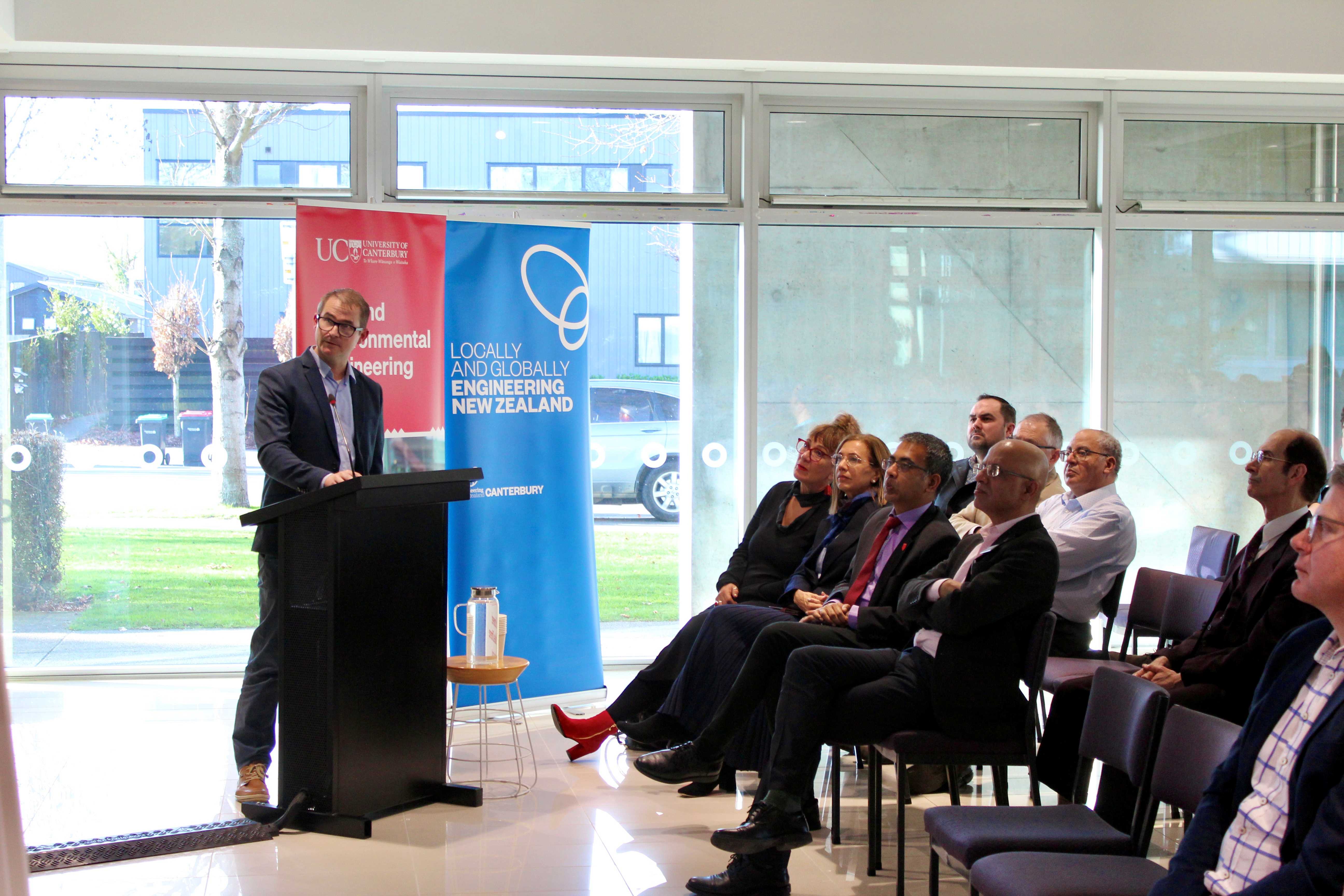From left: Professor Richard Green (Computer Science and Software Engineering), Professor Dan Zhao (Mechanical Engineering) and Kelvin Barnsdale (Computer Science and Software Engineering) are building a platform for unmanned aerial vehicles (UAVs), or drones, to use precision tools in difficult environments. Many industry sectors, including arboriculture, electricity infrastructure and construction industries, could benefit by making inaccessible or hazardous tool use safer, easier and more efficient.
Computer Science Professor Richard Green who specialises in artificial intelligence, and Mechanical Engineering Professor Dan Zhao, an expert in aerospace engineering, are collaborating on the project which could radically change the way drones are used in various industries.
“Our research will go beyond simple surveying and inspection tasks. We will build a platform for UAVs to use precision tools in changing dynamic environments, such as outdoors, around hazardous infrastructure like power pylons, or in construction or forestry, without ladders or scaffolding,” Professor Green says.
“Enabling UAVs to use precision tools is a new technological capability and a radical change in functionality. It will not only transform the way UAVs can be used, but also how and where.”
The UC Engineering professors, along with Senior Research Engineer and UAV expert Kelvin Barnsdale, have assembled a leading New Zealand team in UAV, data and aerodynamics research and engineering, including strong connections and collaborations with national and international researchers, UAV manufacturers and users.
“To achieve our overarching goal, we must solve different but interdisciplinary research and engineering challenges. This includes turbulent flow rotor-to-rotor interactions prediction, precise control of a hovering UAV, force trajectory control, and robust estimate of a UAV’s position and orientation in a wide range of dynamic environments,” Professor Zhao says.
“Our novel approaches to solve these challenges include advanced aerodynamic modelling, new UAV airframe design methods, advanced UAV control methods, novel ways to optimise visual-odometry positioning and demonstration of different applications.”
They have designed their research and implementation initiatives with input from UAV manufacturers, UAV organisations, a wide range of industry end-users in arboriculture, silviculture, electricity infrastructure industry, civil construction, as well as Māori stakeholders and government and regulation bodies.
“Our research will have a wide range of benefits for different industry sectors to make inaccessible and hazardous tasks safer, easier, more cost-effective and efficient. This will help to create new UAV products and services and tap into the fast-growing worldwide UAV manufacturing and service market.”










.jpg)